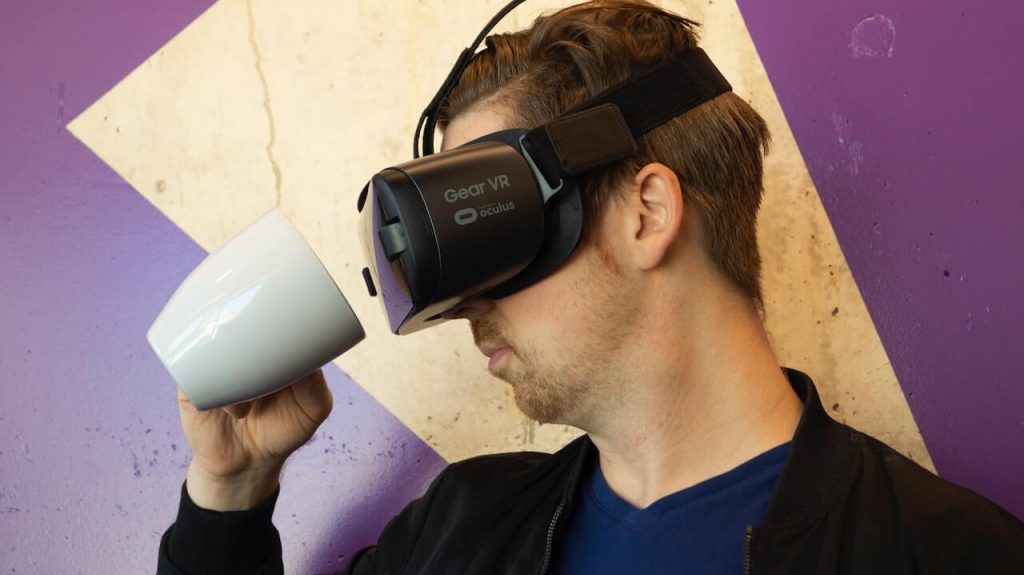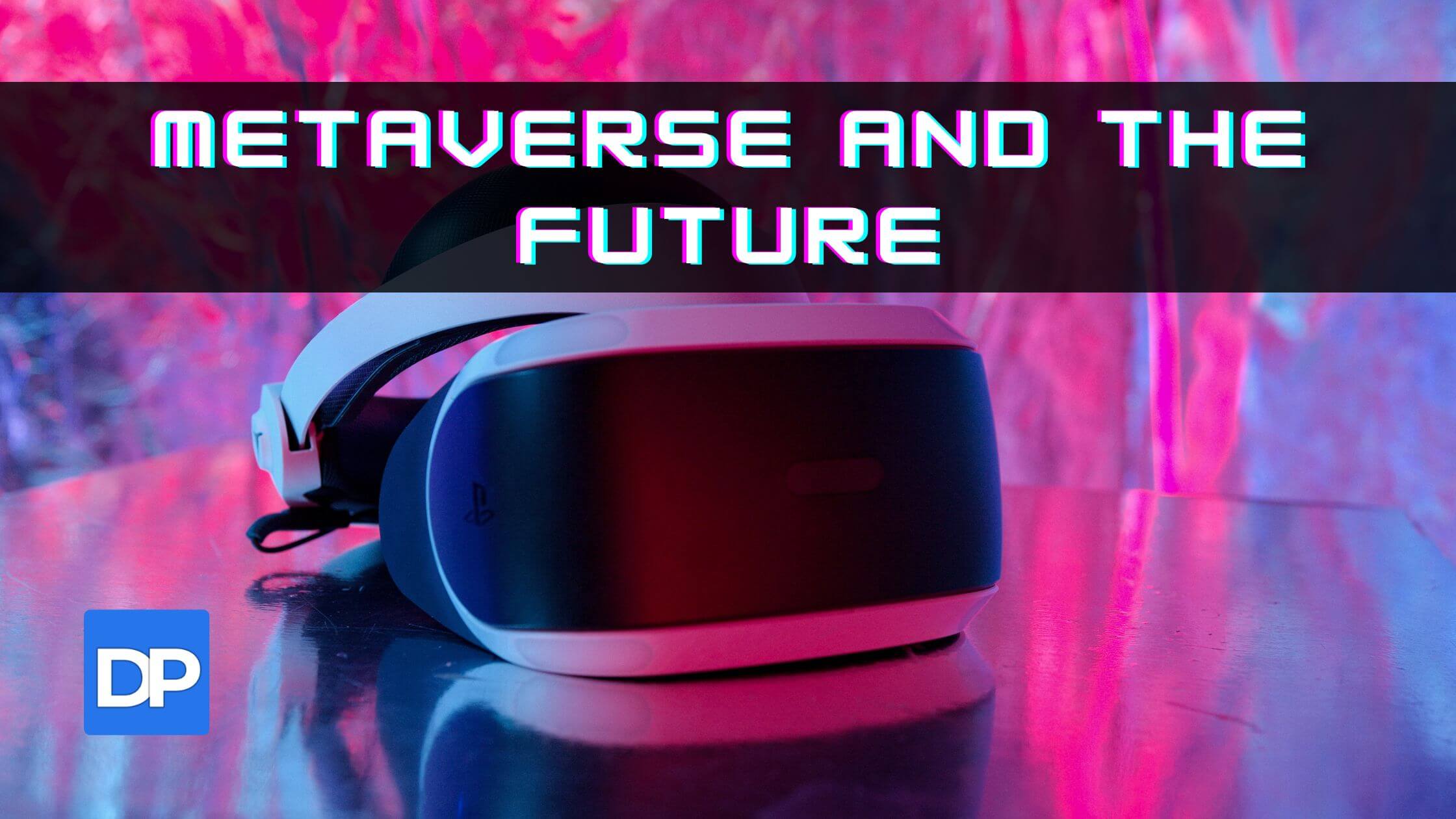“The Metaverse will, at its core, be a collection of new and extended technologies. It is easy to imagine that both the best and the worst aspects of our online lives will be extended by being able to tap into a more-complete immersive experience, by being inside a digital space instead of looking at one from the outside,” says Laurence Lannom, Vice President at the Corporation for National Research Initiatives.
In five years, people’s experiences of the Metaverse will likely be different from what they are today. Author Neal Stephenson introduced the term in 1992 to describe a digital environment that lives alongside the physical world. As it now exists, the Metaverse in the simplest terms as a 3D version of the Internet.
Users can explore media-based virtual worlds where they can ‘chat’ with someone in person rather than via email or messaging apps. For example, you can connect with people using virtual or augmented reality technologies with Metaverse.
The Metaverse is sometimes referred to as the Internet’s successor. It is a permanently shared, three-dimensional online reality. Here users can communicate with each other via digital metaverse avatars of themselves.
The Metaverse is nothing new. There are already basic versions of this exist, mainly in the gaming industry. For decades now, Metaverse has been a hallmark of science fiction books. Nevertheless, the COVID-19 pandemic demanded the fusion of the physical and digital worlds. In addition, with the advent of new technologies, time suggests that the Metaverse is about to penetrate every aspect of human existence.
The Metaverse is the breakthrough the digital industry is ready to embrace. The Metaverse is the future of human interaction and discovery.
It introduces a whole new method of approaching every aspect of human enterprise.
What are the frequently asked questions about Metaverse?
“Metaverse is like the Internet. It is a destination for people to share and exchange content on any subject matter. “And the only difference between the Internet today and the Metaverse is that the Metaverse typically refers to spatial content, so experiences that I’m either having in virtual reality, where I’m completely immersed or mixed reality, where we’re mixing artificial content with the real world,” says Chris Stavros, CEO of MakeSea, an AR/VR cross-platform.
By 2024, the metaverse market might reach $783.3 billion. The estimation is that the market value will roughly triple, edging closer to a trillion-dollar economy, according to statistics. Its economy would rank among the biggest in the world if it were a nation.

1. What does Metaverse mean?
According to some, Metaverse is both a vision for the future online world and a method to capture current trends in online infrastructure. For instance, the rapid development of real-time 3D environments and the corresponding emergence of metaverse technology like augmented reality (AR) and virtual reality (VR).
The fundamental concept you must know about the Metaverse is that it is the real deal. It has the potential to transform how we interact with information and, most importantly, with the internet. Definitions of the term may vary, and details about the development and operations of Metaverse. As a result, many people refer to it as Web 3.0 — the next version of online. Moreover, Meta (previously known as Facebook) stated it best when they described it as an integrated internet that enables you to experience rather than look at it.
2. What are the uses of Metaverse?
The second most important question is what are the uses of Metaverse. To begin with, you must consider if using the Metaverse is worthwhile.
The prospects of exploiting the Metaverse to open new marketing opportunities are its first and foremost valuable traits. In the Metaverse, people may communicate and associate with one another via digital avatars. This element is helpful for brands to make profitable marketing strategies.
Virtual workplace development may see new prospects thanks to the Metaverse. Businesses may, for instance, employ Metaverse and virtual reality developers to design specialised virtual workspaces that are appropriate for management.
Creating virtual learning environments or engaging in virtual tourism are two of the numerous intriguing metaverse applications.
3. Does Metaverse really exist?
Businesses are already investing in platforms and Metaverse technology, even when the Metaverse is still developing.
It makes sense that people are uncertain whether the Metaverse exists, given that it both does and does not. In the future, there will be a single, interconnected metaverse that will resemble online surfing.
4. What opportunities for sustainable progress will the Metaverse bring?
Sustainability, the worst existential danger to civilization, is high on business and political agendas.
It will take a sizable new infrastructure to make the Metaverse a technological reality. Furthermore, if a disproportionate amount of goods and experiences that people can consume both virtually or digitally, this might substantially influence the usage of physical resources and greenhouse gas emissions. This could be advantageous since it would result in less travel, but it could also put more strain on the power system.
Will the Metaverse cause us to prioritise the virtual and digital worlds above the real? The Metaverse, on the other hand, has the potential to revolutionise our ability to observe, model, and act in the physical world. This would allow us to evaluate our environmental effects better and make decisions accordingly.
5. How can you enter into the Metaverse?
You cannot physically enter the Metaverse since it is not an actual location. However, the technology to reach it is available through metaverse platforms created specifically for the platform’s experience. Therefore, in some circumstances, an electronic device is all that is required to access an AR or VR experience.
6. How will implementations of the Metaverse develop around the world?
There are already regional variations in how the Internet operates throughout the globe. The Metaverse will be subject to the fact that technology is becoming the new foundation for international rivalry.
Sovereign governments will probably interfere, as they did in today’s internet world, even if universally acknowledged standards will undoubtedly arise to permit compatibility.
7. How can I invest in Metaverse?
Investments in Metaverse initiatives are active among several tech businesses. Buying Metaverse Tokens, in-game NFTs or virtual lands are a few of the most popular ways to invest in the Metaverse. One of the most straightforward and practical methods of investing in the Metaverse is purchasing Metaverse Tokens.
Like digital currencies, Metaverse token value changes. Where you may create and exchange visual assets and experiences are environments modelled after games on popular Metaverse platforms. With virtual real estate becoming more and more popular, investing in the crypto metaverse is now simple.
8. Is it profitable to invest in the Metaverse?
It is impossible to predict the profitability of a commodity or currency correctly. But in general, if you invest in Metaverse and acquire land over ten years, you could expect to make roughly 1500%. So in the long run, purchasing real estate is often advantageous, and everyone has done so.
9. What are the different components of the modern Metaverse?
One of the most burning questions about the Metaverse is regarding its different components. Instead of thinking that the Metaverse is just composed of virtual worlds, beginners contemplate the specific elements that would make it up. For example, infrastructure, user interface, decentralisation, space computing, and a creator economy are crucial elements of the Metaverse.
Additionally, the metaverse elements also take care of experiences and exploration. Each piece plays a specific part in assisting the various implementations of the Metaverse’s characteristics in taking shape. For instance, the infrastructure part focuses heavily on computing tools like GPUs and communication technology.
The emphasis of the human interface section is on the use of VR headsets, AR glasses, and other technologies to access the Metaverse. The capacities of the Metaverse are enhanced, while each component offers unique features. Developers of the Metaverse might easily add new features with unique layers.
10. What makes AR and VR important in the Metaverse?
Anyone with access to a headset in virtual reality may have an immersive experience. With VR headsets, you can work in a digital world. In addition, users with complete VR headsets can explore a 360-degree virtual space exploring whatever they like.
On the other hand, augmented reality is more or less a digital world embedded in reality. While VR may encourage more interaction among users in the Metaverse, AR-connected glasses may contribute to creating new 3D virtual worlds.
To Wrap Up
As already stated before, Metaverse is a concept that has been introduced previously. But it is surprising how quickly it has recently gained attention. This is because today both the Metaverse meaning and its use is very dynamic. Therefore, brands and businesses employ it in their futuristic endeavours.
The Metaverse, the most recent paradigm change on the Internet, has been the topic of many recent discussions. So it makes sense that brands, companies, and clients worldwide would have a lot of questions about what it is, how it operates, and, most importantly, if it is even relevant.
Related content: Web3, Metaverse and AI bots – a talk regarding building apps in 2023
Check out the recent talk by our CEO, Taras Filatov, given during NFT Tech Conference on 10th February 2023, regarding how Web3, Metaverse and AI technologies now finally converge together and become a part of a larger picture in modern business and entertainment applications.


